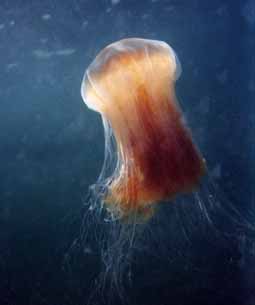ANNA WALDHERR A Voice Reclaimed, Surviving Child Abuse
 Cyanea jellyfish, North Sea, Author Ole Kils olekils@web.de (CC BY-SA 3.0 Unported, GNU Free Documentation License)
Cyanea jellyfish, North Sea, Author Ole Kils olekils@web.de (CC BY-SA 3.0 Unported, GNU Free Documentation License)
Jellyfish are equipped with stinging tentacles used to paralyze, capture, and kill their prey. The largest known specimen, the lion’s mane or giant jelly, has tentacles which can reach 120 feet in length. That is longer than a blue whale.
The sting of a jellyfish can be agony. In humans, that sting can cause burning and blistering of the skin, difficulty breathing, changes in heart rate, chest pain, abdominal cramps, vomiting, muscle spasms, numbness, weakness, and collapse.
The tentacles can sting, even after a jellyfish has died.
The Tentacles of Abuse
Like jellyfish, abuse has long tentacles. Rather than extending into deep water, those tentacles extend across the years. But their sting can still be agony. Like the tentacles of jellyfish, the tentacles of abuse can paralyze, capture, and in some cases kill.
Real Wounds
Whether we suffer with physical ailments…
View original post 444 more words



















